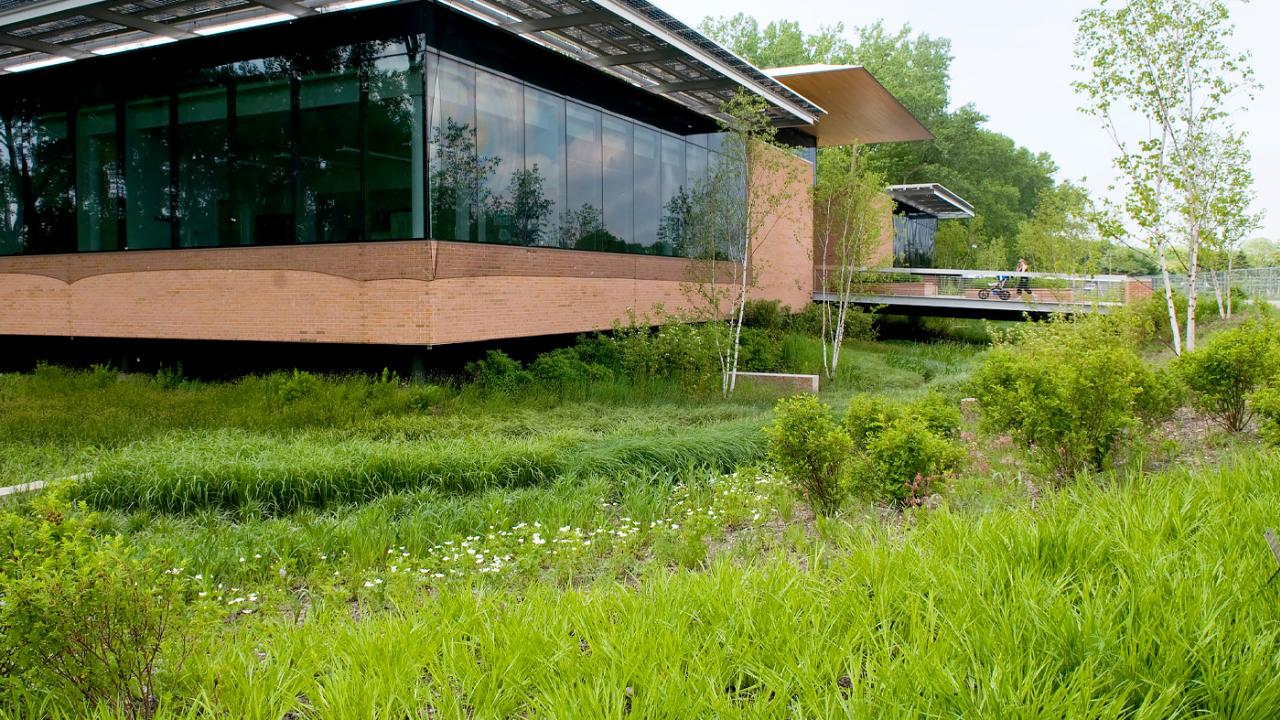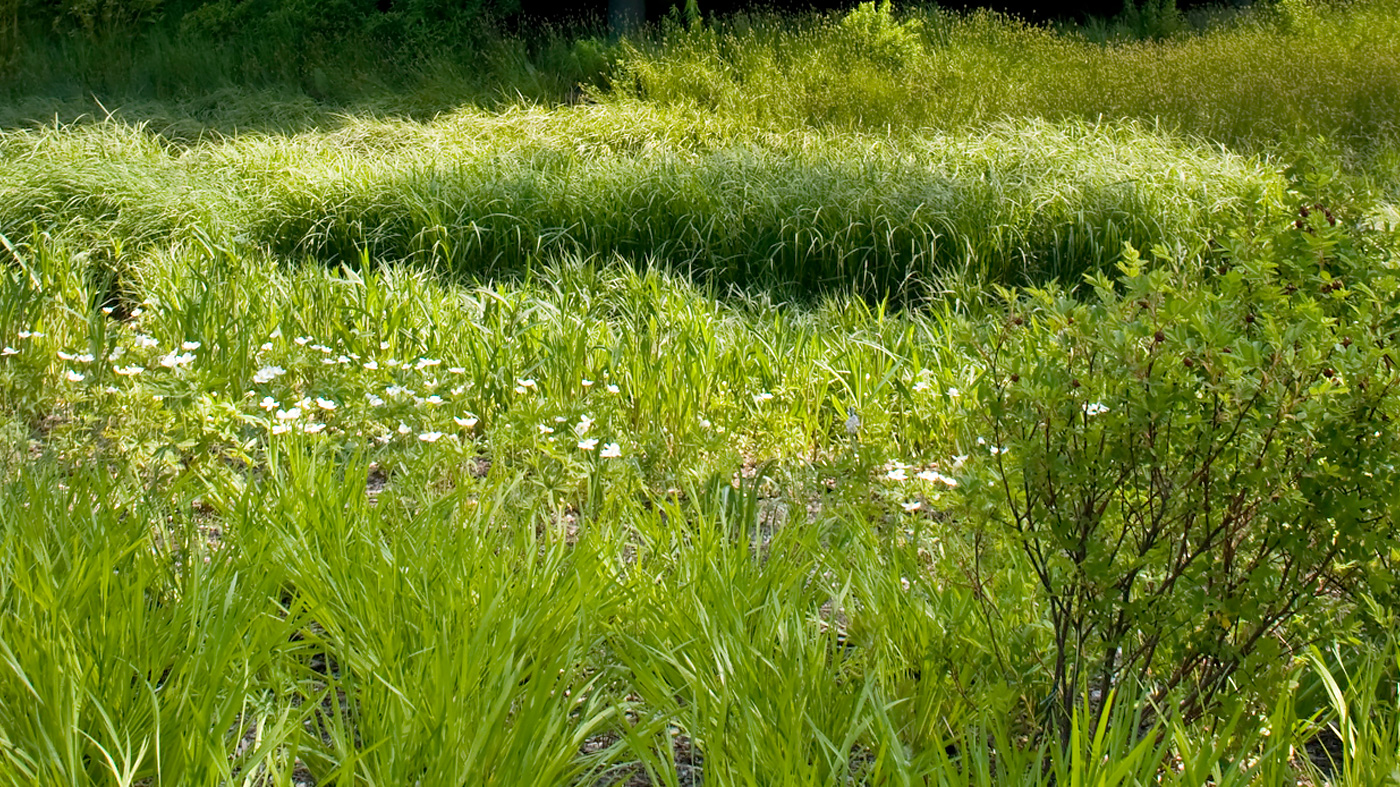

Rain Gardens
Eco-friendly Storm Absorbers
When it rains, often it pours. Our urban stormwater systems were originally designed to prevent flooding and to quickly move water off the streets. However, as stormwater rushes through driveways and gutters, it picks up an array of contaminants en route to the river or lake: oil, fertilizers, pesticides, and other chemicals. When this dirty water reaches its final destination, pollutants poison the water and choke plant and animal life.
Planting a rain garden is a way to enhance your landscape's aesthetic while absorbing and cleaning rainwater. The garden temporarily traps water from rooftops, driveways, and other hard surfaces long enough so it can percolate, filtering out pollutants and improving water quality as it replenishes groundwater levels. Visiting the Chicago Botanic Garden's Rainwater Glen is a good way to see how the process works and to gather ideas for your own rain garden.

DIY Rain Garden
Storm watch Observe your landscape during a heavy rainfall. For best results, rain gardens should be planted between the source of stormwater runoff (roof, driveway) and the runoff's next destination (drains, gutters, landscape depressions). If you have a downspout draining from your roof, combined with a lawn or garden area that slopes away from your house, you've got a great place to create your own rain garden. Before planting, be sure the rain garden location is at least 10 feet away from your home's foundation, and be sure to avoid underground utility lines.
Consider your space Home rain gardens generally are from 100 to 300 square feet (or about 10 x 10 to 15 x 20 feet). A small area can be transformed into a lush eco-garden for just a few dollars per square foot.
Choose the best plants for the project The key to a successful rain garden is using native perennial plants with very deep root systems. The Chicago Botanic Garden's Rainwater Glen features marsh blazing star, spotted joe-pye weed, great blue lobelia, and a variety of rushes and sedges, all of which tolerate rainfall fluctuations.
Create your garden Dig approximately 4 to 6 inches deep—a little deeper on the downslope side (think of a shallow bowl in your landscape, tilted slightly to one side). Use the soil from digging to create a ledge or berm along the downslope side to help trap the water and keep it from running out of the "bowl." Add mulch or grass to the berm to prevent erosion.
Arrange plants to their advantage Plant those that need more water at the deepest level, and situate plants preferring less moisture in the garden's shallow areas.
Know your resources Great resources to learn more and help you plan your rain garden can be found here.
Mosquito Habitat?
Wondering if mosquitos will be attracted to your own rain garden? Happily, the answer is no. In a properly designed rain garden, water usually drains in less than a day. Mosquitos need seven to 12 days of standing water for their eggs to hatch. In fact, rain gardens may attract a variety of beneficial insects like dragonflies that actually will reduce the mosquito population!

